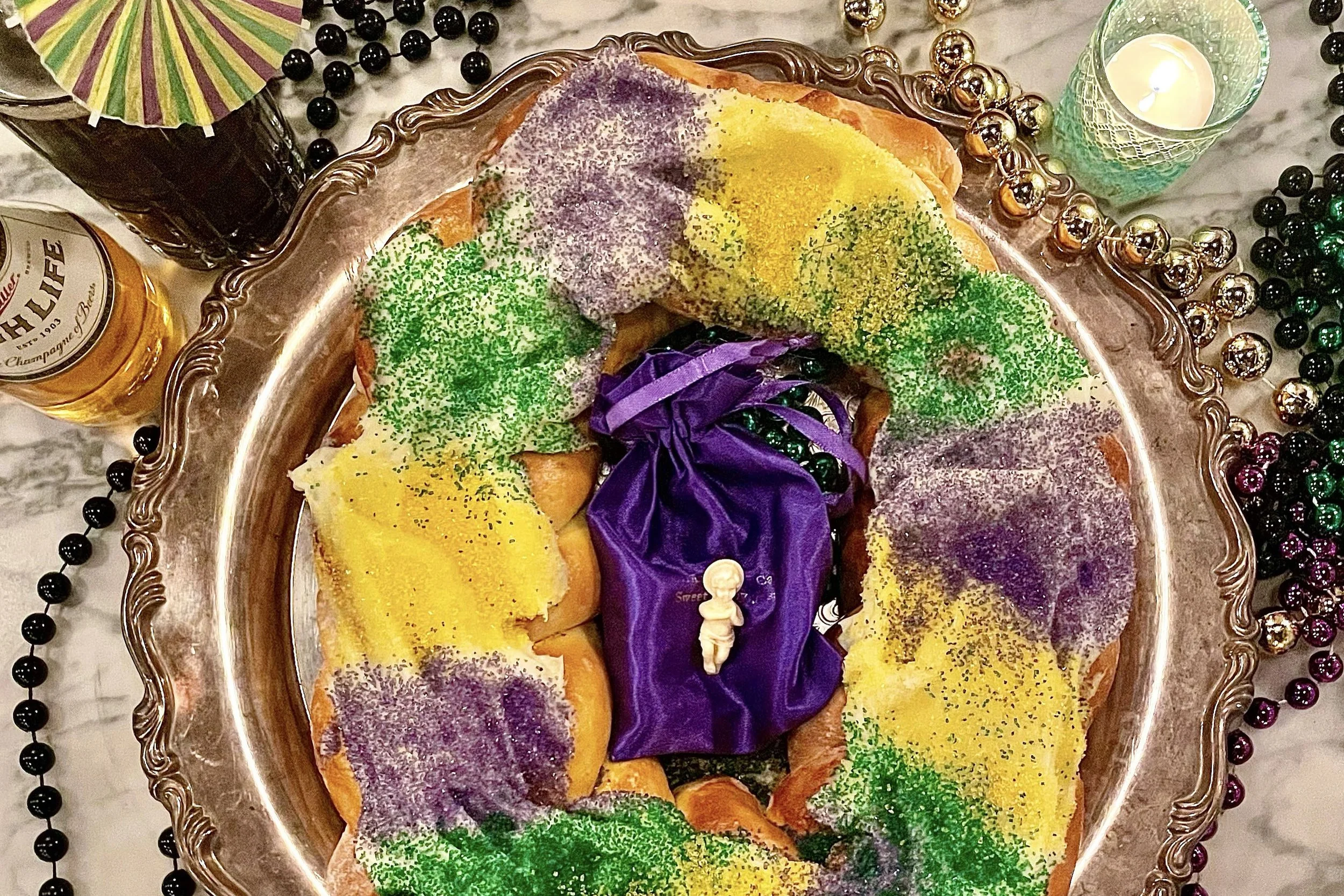The History of King Cakes
A king cake is a sweet, colorful pastry tied to the celebration of Epiphany and the Mardi Gras season. As native New Orleanians, it’s a tradition we’ve cherished our whole lives.
The tradition dates back to ancient Europe, where the "King Cake" was part of the Feast of the Epiphany, marking the arrival of the three wise men to see baby Jesus. The cake was baked in a circular shape to symbolize the journey of the wise men, and sometimes a coin or bean was hidden inside. The person who found it would be crowned "king" for the day, leading to festivities and a bit of friendly competition.
When French settlers brought the tradition to New Orleans in the 18th century, it evolved into the festive, community-driven tradition we know today. The cake’s signature colors—purple (justice), green (faith), and gold (power)—were introduced in the 1980s as part of the Mardi Gras celebrations. The tiny plastic baby, added later, is now a hallmark of the king cake tradition. Whoever finds it in their slice is expected to either host the next party or provide the next king cake, adding an extra layer of fun and camaraderie to the season!


